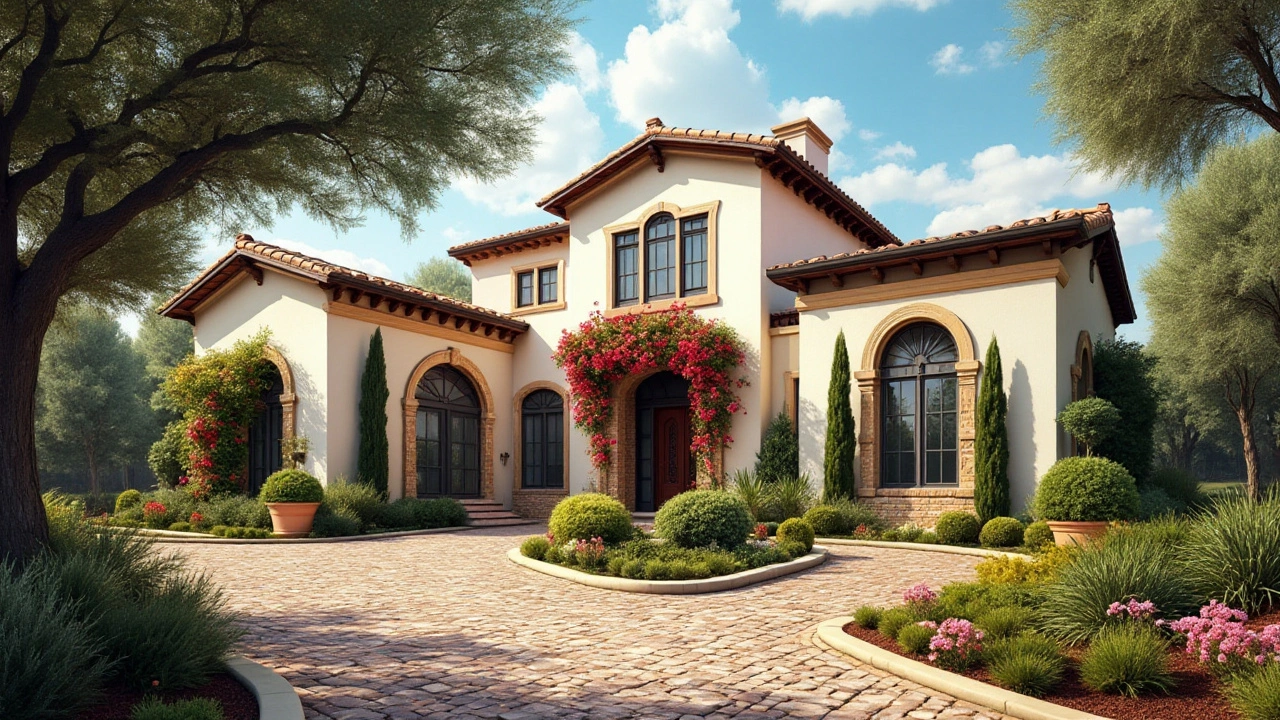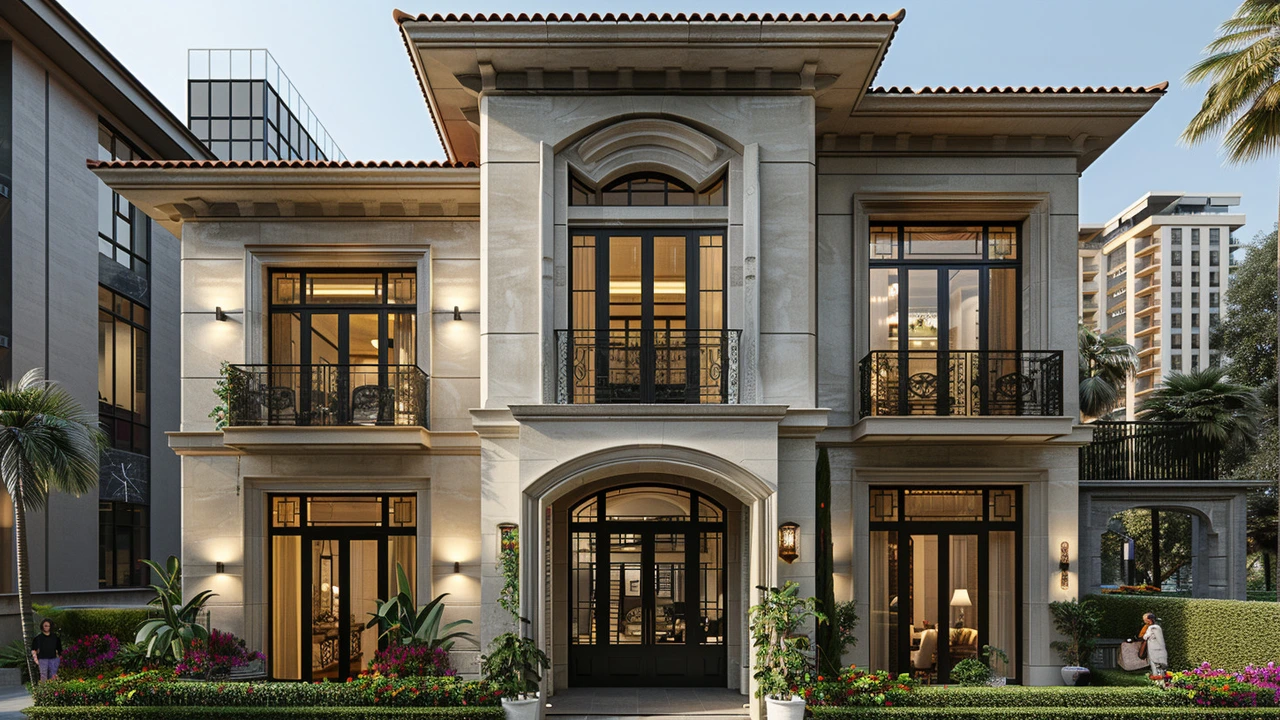Mediterranean Revival Architecture is an enchanting style that draws inspiration from the sun-drenched coasts of Spain, Italy, and Greece. Emerging in the late 19th and early 20th centuries, it brings a touch of Old World elegance through its characteristic terracotta roofs, arched windows, and stucco walls. This architectural approach captures the essence of beauty and harmony, making it a popular choice for homes in warm climates. Dive into the elements that define this captivating style and learn tips on incorporating its timeless allure into modern designs.
Mediterranean Revival Architecture: Old-World Looks for Modern Living
You’ve probably passed a Mediterranean Revival house and thought, "That looks like a film set." The style borrows from Spanish, Italian, and Moorish traditions and became hugely popular in the U.S. in the 1920s. It feels timeless because it mixes dramatic shapes with simple, durable materials—stucco walls, red clay tile roofs, arches and shaded courtyards. This page shows how to spot the style, why it works in warm climates, and what to know if you own or restore one.
Key features to recognize
Start with the roof: low-pitched, barrel-shaped clay tiles that shed water and define the silhouette. Walls are usually stucco—thick, textured, often painted warm white, cream, or soft earth tones. Look for rounded arches over doors, windows, and porches; they’re a clear giveaway. Wrought-iron grilles, balconies, and window grates add detail without fuss.
Courtyards and loggias are part of the plan, not decoration. These semi-open spaces create cool pockets of shade and connect indoor and outdoor living. Windows are often grouped, sometimes recessed, with deep sills that keep rooms cooler. Inside, expect exposed wooden beams, simple tile floors, and plaster finishes—materials chosen for durability and low maintenance.
Decorative tiles appear on stair risers, fountains, and pools. The palette stays natural—terracotta, deep blue, olive green and sun-baked yellows—so details pop without overwhelming the simple massing of the building.
Practical tips for owners and renovators
If you’re restoring a Mediterranean Revival home, keep the original materials where possible. Replace cement-based stucco with breathable, lime-based mixes if the building is old—this prevents trapped moisture and wood rot. For roofs, clay tiles can last 50+ years if underlayment and flashing are maintained; don’t replace them with cheaper substitutes that change the look and performance.
Energy-wise, these homes perform well in warm climates thanks to thick walls and shaded outdoor rooms. Add insulation carefully—behind interior finishes when possible—to avoid sealing moisture into historic walls. Consider discreet modern upgrades: solar panels placed on rear slopes, energy-efficient glazing set back in deep frames, or a ductless HVAC system to preserve interiors.
When choosing colors and trim, use period-appropriate hues and ironwork patterns. For landscaping, drought-tolerant Mediterranean plants—lavender, rosemary, olive trees—fit the aesthetic and reduce water use. If you live in a region with preservation rules (think Coral Gables, Miami or California’s coastal towns), check local guidelines before changing roofs, stucco texture, or windows.
Mediterranean Revival is easy to love because it blends practical construction with a relaxed, elegant look. Want help spotting examples near you or planning a smart restoration? Ask for local case studies or a short checklist to get started.
Mediterranean Revival architecture combines elements from various regions around the Mediterranean Sea, creating a timeless and visually captivating style. Its use of warm colors, arches, and lush landscaping makes it a favorite among designers. Practical aspects, such as its ability to stay cool in hot climates, add to its desirability. This article dives into why this architectural style continues to be popular and how it can be applied to modern designs.


